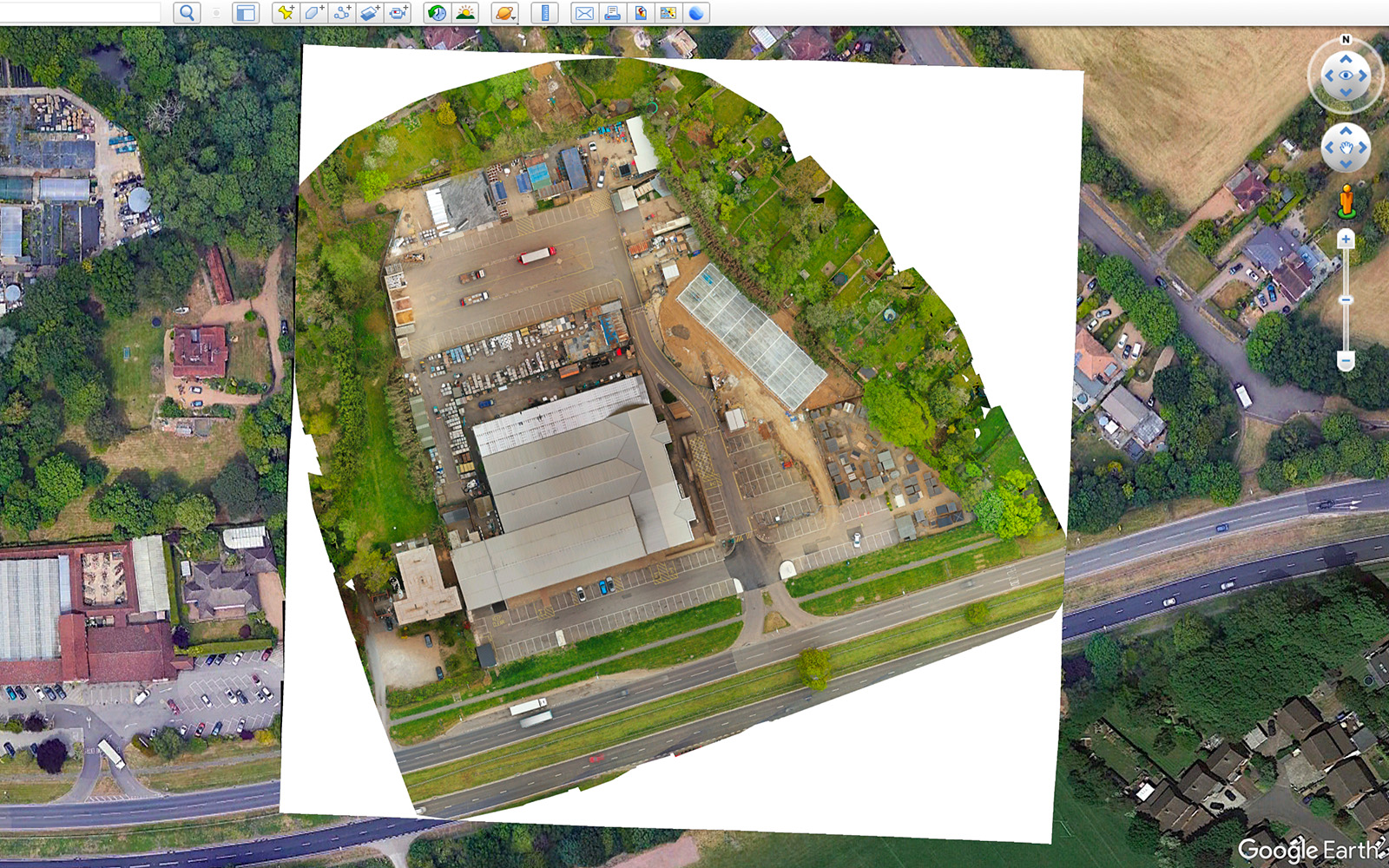Read Time 3 mins
29/03/2023

Orthomosaic Maps FAQ
Q: What is an orthomosaic map? A: An orthomosaic map is a detailed, high-resolution image of the earth's surface created by combining multiple aerial or satellite images. Unlike traditional aerial photos, orthomosaic maps are geometrically corrected so that they have a uniform scale, allowing for accurate measurement of distances, angles, and areas.
Q: What are orthomosaic maps used for? A: Orthomosaic maps have a wide range of applications, including land surveying, mapping, urban planning, agriculture, environmental monitoring, and construction management. They can be used to create 3D models of terrain, identify changes over time, and track the growth of crops or vegetation.
Q: How are orthomosaic maps created? A: Orthomosaic maps are created by stitching together multiple aerial or satellite images of the same area, taken from different angles and heights. The images are processed using specialized software to remove distortions caused by camera perspective and terrain relief, and to create a seamless, high-resolution image of the area.
Q: What kind of data is required to create an orthomosaic map? A: To create an orthomosaic map, you need high-quality aerial or satellite imagery of the area you want to map. This can be obtained from commercial providers or by flying a drone equipped with a camera over the area. You also need specialized software to process the images and create the final orthomosaic map.
Q: How accurate are orthomosaic maps? A: The accuracy of an orthomosaic map depends on the quality and resolution of the source images, as well as the processing algorithms used to create the final map. In general, orthomosaic maps can achieve sub-centimeter accuracy in terms of spatial resolution and position.
Q: Can orthomosaic maps be used for legal purposes? A: Yes, orthomosaic maps can be used as legal documents in many jurisdictions. They can be used to provide accurate measurements of land boundaries, track changes over time, and identify land-use patterns.
Q: How much does it cost to create an orthomosaic map? A: The cost of creating an orthomosaic map depends on a variety of factors, including the size and complexity of the area being mapped, the quality and resolution of the source imagery, and the processing algorithms used to create the final map. Prices can range from a few hundred to several thousand dollars or more, depending on the project requirements.
Q: How long does it take to create an orthomosaic map? A: The time required to create an orthomosaic map depends on the size and complexity of the area being mapped, as well as the processing power of the computer used to process the images. In general, the process can take anywhere from a few hours to several days or more, depending on the project requirements and resources available.
Q: Can orthomosaic maps be updated over time? A: Yes, orthomosaic maps can be updated over time by acquiring new aerial or satellite imagery and processing it using the same algorithms used to create the original map. This allows for accurate tracking of changes over time, such as land-use patterns or the growth of vegetation.
How to Use a Drone to Make an Orthomosaic Map
Orthomosaic maps are detailed aerial images that are stitched together to create a larger and more comprehensive image of a particular area. Drones are an excellent tool for creating orthomosaic maps because they can capture high-resolution images of an area from different angles and elevations. Here are the steps to using drones to make orthomosaic maps:
-
Plan the flight: Before you can use a drone to make an orthomosaic map, you need to plan the flight. You will need to determine the area you want to map and the altitude at which you want to fly the drone. You will also need to consider the weather conditions, the battery life of the drone, and any regulations that apply in your area.
-
Set up the drone: Once you have planned the flight, you will need to set up the drone. This involves checking the batteries, attaching the camera, and calibrating the sensors. You will also need to check the GPS signal to ensure that the drone can accurately record its location.
-
Fly the drone: Once the drone is set up, you can begin the flight. You will need to fly the drone over the area you want to map, taking high-resolution images of the ground. You may need to fly the drone in multiple passes to capture all the necessary images.
-
Process the images: After the flight, you will need to process the images to create the orthomosaic map. This involves stitching the images together to create a single, comprehensive image of the area. You can use specialized software to perform this task.
-
Analyze the map: Once the orthomosaic map is complete, you can analyze it to extract useful information. For example, you can measure distances, calculate areas, and identify features of interest. You can also use the map to monitor changes over time, such as changes in vegetation or land use.
Overall, using a drone to create orthomosaic maps is an effective and efficient way to obtain detailed aerial images of an area. By following these steps, you can create high-quality maps that can be used for a variety of purposes.